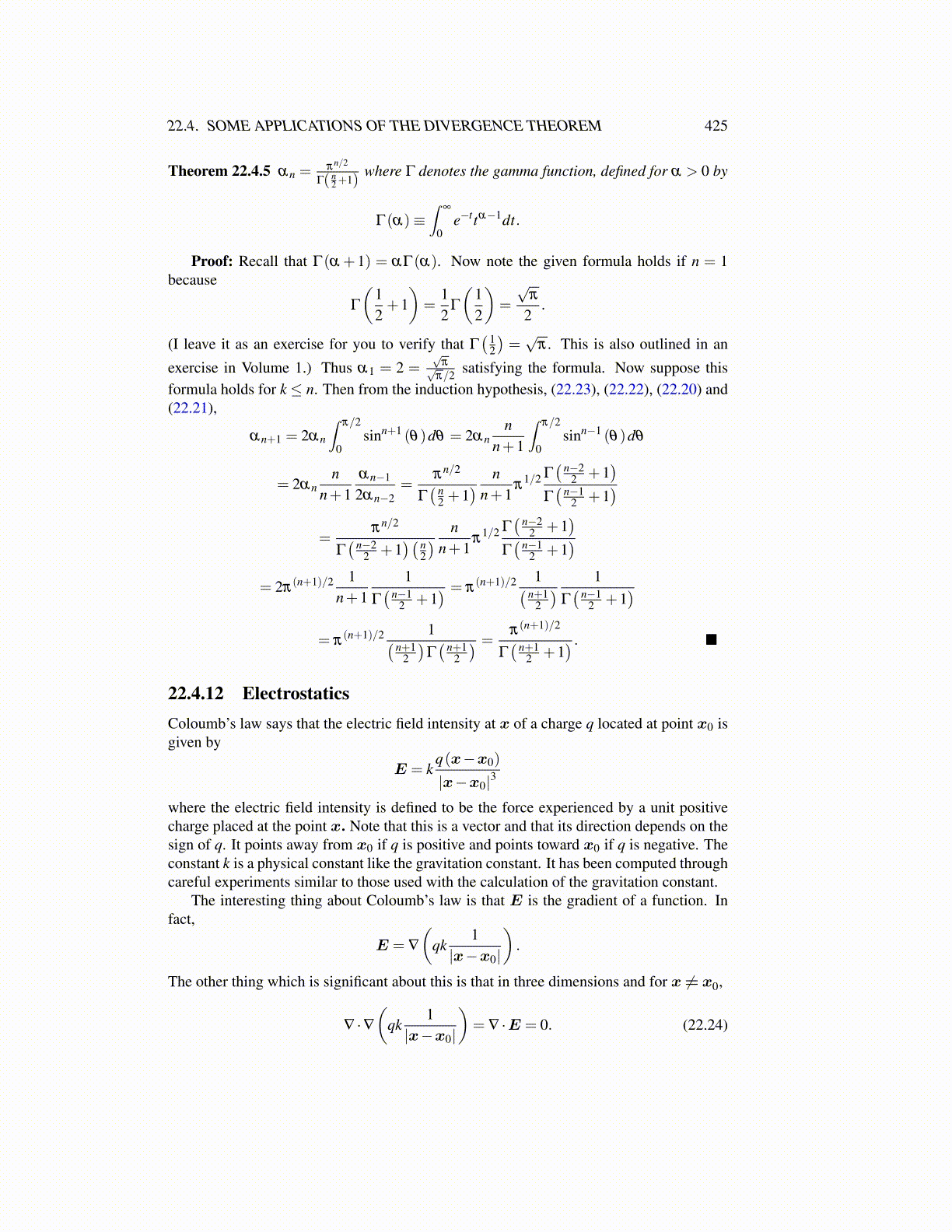
22.4. SOME APPLICATIONS OF THE DIVERGENCE THEOREM 425
Theorem 22.4.5 αn =πn/2
Γ( n2+1)
where Γ denotes the gamma function, defined for α > 0 by
Γ(α)≡∫
∞
0e−ttα−1dt.
Proof: Recall that Γ(α +1) = αΓ(α). Now note the given formula holds if n = 1because
Γ
(12+1)=
12
Γ
(12
)=
√π
2.
(I leave it as an exercise for you to verify that Γ( 1
2
)=√
π . This is also outlined in an
exercise in Volume 1.) Thus α1 = 2 =√
π√π/2 satisfying the formula. Now suppose this
formula holds for k≤ n. Then from the induction hypothesis, (22.23), (22.22), (22.20) and(22.21),
αn+1 = 2αn
∫π/2
0sinn+1 (θ)dθ = 2αn
nn+1
∫π/2
0sinn−1 (θ)dθ
= 2αnn
n+1αn−1
2αn−2=
πn/2
Γ( n
2 +1) n
n+1π
1/2 Γ( n−2
2 +1)
Γ( n−1
2 +1)
=πn/2
Γ( n−2
2 +1)( n
2
) nn+1
π1/2 Γ
( n−22 +1
)Γ( n−1
2 +1)
= 2π(n+1)/2 1
n+11
Γ( n−1
2 +1) = π
(n+1)/2 1( n+12
) 1Γ( n−1
2 +1)
= π(n+1)/2 1( n+1
2
)Γ( n+1
2
) = π(n+1)/2
Γ( n+1
2 +1) . ■
22.4.12 ElectrostaticsColoumb’s law says that the electric field intensity at x of a charge q located at point x0 isgiven by
E = kq(x−x0)
|x−x0|3
where the electric field intensity is defined to be the force experienced by a unit positivecharge placed at the point x. Note that this is a vector and that its direction depends on thesign of q. It points away from x0 if q is positive and points toward x0 if q is negative. Theconstant k is a physical constant like the gravitation constant. It has been computed throughcareful experiments similar to those used with the calculation of the gravitation constant.
The interesting thing about Coloumb’s law is that E is the gradient of a function. Infact,
E = ∇
(qk
1|x−x0|
).
The other thing which is significant about this is that in three dimensions and for x ̸= x0,
∇ ·∇(
qk1
|x−x0|
)= ∇ ·E = 0. (22.24)